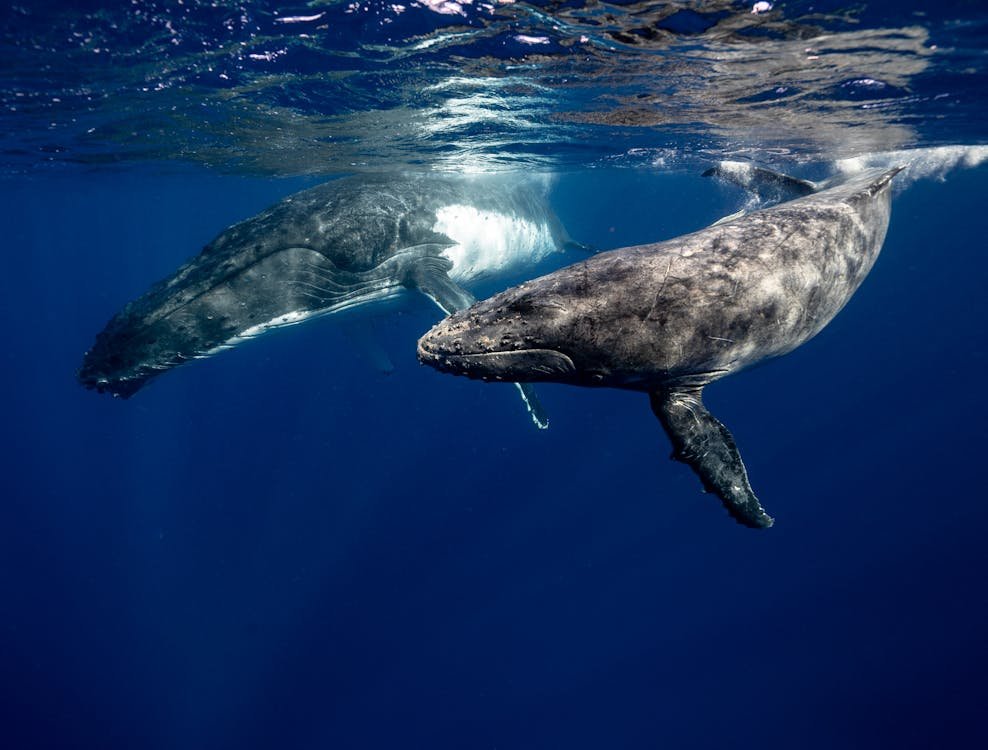Whales are some of the most awe-inspiring creatures on the planet. Their immense size, mysterious underwater behavior, and deep connection to ocean ecosystems have fascinated humans for centuries. The oceans are home to over 80 species of cetaceans, but some stand out due to their colossal size. In this article, we’ll explore the top five largest whale species and the best places to encounter them in their natural habitats.
1. Blue Whale (Balaenoptera musculus)
- Average Length: 80-100 feet
- Weight: Up to 200 tons
- Habitat: All major oceans except the Arctic
The blue whale holds the title of the largest animal ever known to have existed on Earth, even surpassing the largest dinosaurs in size. These gentle giants have an enormous appetite for krill and can consume up to 4 tons of the tiny crustaceans daily. Despite their size, blue whales are remarkably graceful as they navigate the world’s oceans.
Where to Find Them:
Blue whales can be found in various regions of the globe, especially in colder waters where krill populations thrive. The best spots to witness them include:
- Southern Ocean, Antarctica: Prime blue whale feeding grounds.
- Coastal California: Often spotted during migration between Mexico and Alaska.
- Iceland and Norway: Rich feeding grounds in the North Atlantic.
2. Fin Whale (Balaenoptera physalus)
- Average Length: 70-85 feet
- Weight: 50-80 tons
- Habitat: Temperate and polar regions of the world’s oceans
Often called the “greyhound of the sea” for its speed and sleek appearance, the fin whale is the second-largest whale species. Like blue whales, they feed primarily on krill and small fish. Despite their size, they are known for their ability to swim at speeds of up to 23 mph.
Where to Find Them:
Fin whales are widely distributed and can be seen in both hemispheres. Some of the best spots include:
- Iceland and Greenland: Great opportunities to see them in the North Atlantic.
- Mediterranean Sea: Particularly around the Ligurian Sea in Italy.
- Gulf of Maine, USA: Sightings are frequent during migrations.
3. Sperm Whale (Physeter macrocephalus)
- Average Length: 50-67 feet
- Weight: 35-45 tons
- Habitat: Deep waters across all major oceans
Sperm whales, with their iconic large heads and deep diving capabilities, are the largest of the toothed whales. They are famous for their remarkable ability to dive over 3,000 feet deep in search of their favorite prey, giant squid. These deep divers can hold their breath for up to 90 minutes.
Where to Find Them:
Sperm whales are often found in deep oceanic waters and can be observed in places such as:
- Kaikoura, New Zealand: Known for deep waters close to the shore.
- Azores, Portugal: A hotspot for sperm whale sightings.
- Sri Lanka: Warm waters perfect for spotting them year-round.
4. Bowhead Whale (Balaena mysticetus)
- Average Length: 45-60 feet
- Weight: 75-100 tons
- Habitat: Arctic and sub-Arctic waters
Bowhead whales, characterized by their massive bow-shaped heads, are perfectly adapted to the icy conditions of the Arctic. They can break through thick sea ice to breathe and are known for their long lifespans, with some individuals estimated to live over 200 years.
Where to Find Them:
As residents of the Arctic, bowhead whales are primarily found in cold waters:
- Baffin Bay, Canada: A prime location in the Canadian Arctic.
- Spitsbergen, Norway: Known for consistent sightings during the summer months.
- Alaska, USA: Especially around the Bering Sea and Beaufort Sea.
5. Humpback Whale (Megaptera novaeangliae)
- Average Length: 40-52 feet
- Weight: 25-40 tons
- Habitat: Global distribution, especially in tropical and temperate waters
Humpback whales are renowned for their acrobatic breaches and complex songs. Though not as large as the blue or fin whales, they are one of the most popular whale species for whale watching due to their curious and approachable behavior. Humpbacks are also known for their long migrations, traveling thousands of miles each year between feeding and breeding grounds.
Where to Find Them:
Humpback whales can be seen in many parts of the world. Some famous locations include:
- Hawaii, USA: A prime breeding ground in winter.
- Tonga: Crystal-clear waters are ideal for spotting mothers and calves.
- Australia’s Great Barrier Reef: Another popular breeding spot.
- Alaska’s Inside Passage: Great for summer feeding season.
Conclusion
Whales are the majestic giants of the sea, each species uniquely adapted to thrive in various ocean habitats. Whether you want to experience the grandeur of a blue whale or witness the acrobatics of a humpback, there are countless opportunities around the world to encounter these awe-inspiring creatures. Remember to approach whale watching with respect, following guidelines to ensure their protection and the sustainability of their environments.

